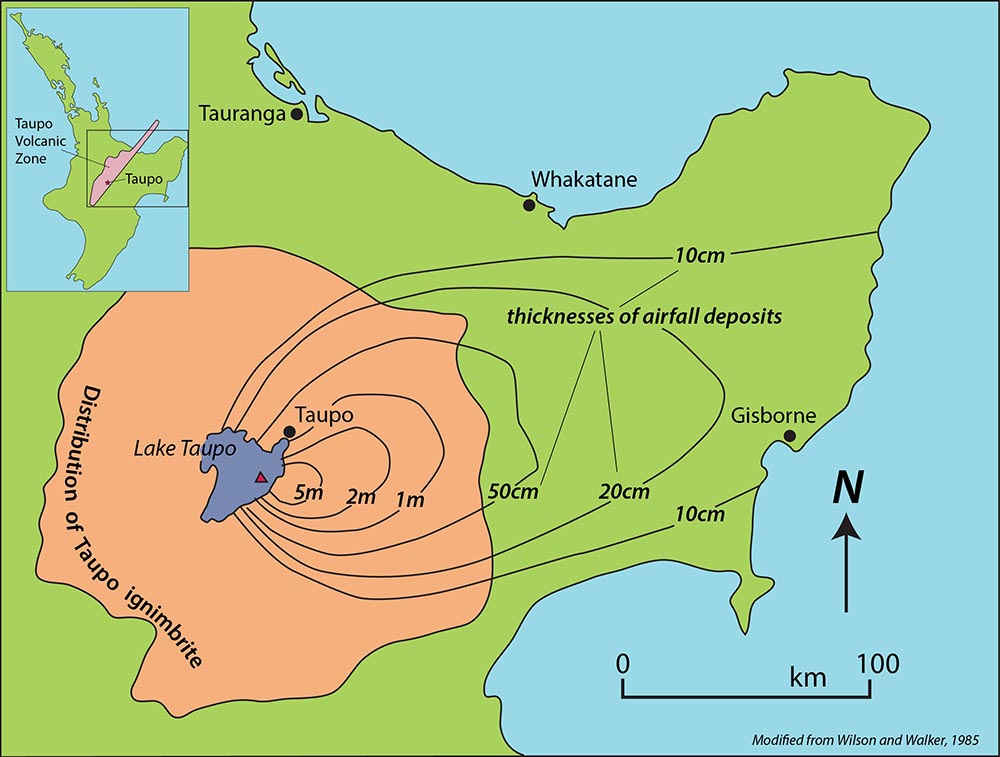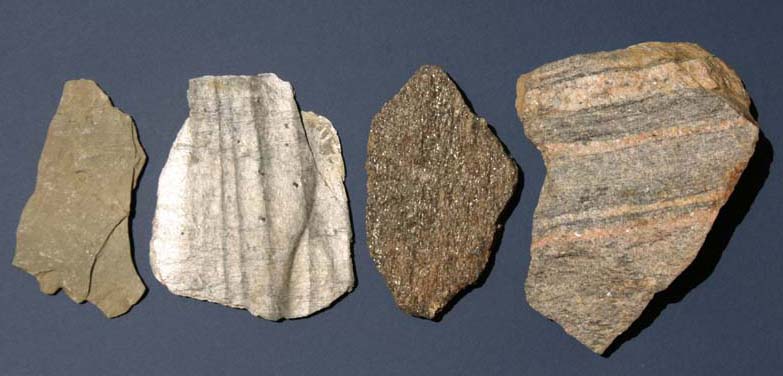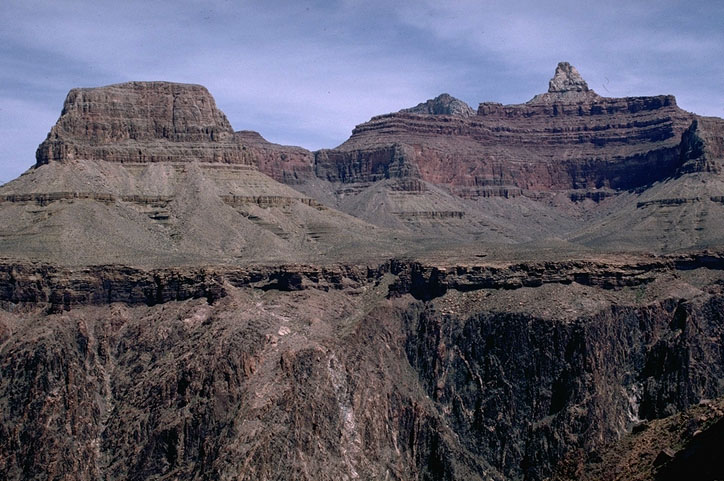Five Awesome Minerals –for rocks and landscapes
All told, we humans have discovered more than 5000 mineral types. I challenged myself to list the five most important minerals when it comes to the formation of rocks and their subsequent weathering and erosion into landscape.

It’s an impossible task –and subjective, of course –and I fudged a bit by grouping some minerals together. But here they are: the silicate minerals quartz, mica, feldspar, and mafic minerals, and the carbonate mineral, calcite. I invite you to take me to task in the comments section. Even so, these five minerals are easy to identify and are critical to any discussion about rocks –which makes them important to understanding weathering and erosion. And, I’m adding them to my already packed curriculum for my introductory class on surface processes next term, so five seems to be a good upper limit on the numbers.
Oh! Click on any image to see it enlarged on a separate page.

Weathering, by the way, is the in-place physical and/or chemical breakdown of rock; erosion is its removal –so they go hand-in-hand. A lot goes into how susceptible a rock is to these processes—not just the mineral content—and when it comes to chemical breakdown, the main factors always involve water. If a rock is accessible to water, it will break down more quickly; if it’s not accessible to water, it will be more resistant.

Because some rocks will weather and erode more quickly than others, landscapes form with cliffs and valleys and steep slopes, gentle slopes –all sorts of variation you can imagine—depending in part on the bedrock. We call the phenomenon “differential erosion”. You can find more detail on the processes in one of my earlier posts, called “Shaping of Landscape“.

Ok… the minerals:
Quartz –most people have come to know quartz because of its pretty crystals –especially the purple variety called amethyst—but they might not realize that it’s a hugely important component of many igneous, metamorphic, and sedimentary rocks, and it forms the cement of many sedimentary rocks. When it comes to weathering, quartz is practically inert chemically, so a strongly quartz-cemented sandstone will be more resistant to weathering and erosion than most other sedimentary rocks. The sandstone will stand out in relief, likely as cliffs or even overhangs. By contrast, weakly cemented, often finer-grained rocks tend to form slopes or even valleys.

If you look closely at a sandstone like the one below, chance are you’ll see mostly quartz grains. Quartz grains might break up into little pieces as they’re being transported by rivers, for example, but they won’t turn into clay like most other minerals. The result? Sediment gets increasingly rich in quartz the farther it’s transported from its source –and so if it travels a great distance, quartz is just about the only thing left!

And if you’re one of those people who really love this mineral, check out this post by Roseanne Chambers, which is all about quartz!
Micas are those shiny sheet-like minerals we see catching the light in a whole host of rocks. The best known micas are muscovite (white mica) and biotite (black mica). In metamorphism, they grow larger with increases in temperature, providing a handy way to distinguish between slate, phyllite, and schist — a nice thing to know in a geology class. The diagram below illustrates the process.

When it comes to weathering and erosion, those little mica sheets allow infiltration of water. Metamorphic rocks overall are pretty resistant because of their crystallinity –but slates or schist, for example, degrade much more quickly than gneisses because of their prevalence of mica minerals, which together create a fine-scale layering in the rock. Gneisses are coarse-grained, and their layering tends to be thicker and less permeable.
Collectively, feldspars are the most common minerals of the Earth’s crust –and there are numerous varieties, the most common being orthoclase and plagioclase, which often occur together. For the purposes of landscapes, I grouped them together as one: they’re all kind of chunky looking and are generally light-colored. Feldspars are the main components of igneous rocks, making up 60-70% (or even more) of most granitic rocks, which tend to form distinctive landscapes marked by cliffs and large rounded boulders.

The “mafic minerals” are named so because they’re generally rich in iron and magnesium and poor in silica when compared to a lot of other common minerals –and they’re typically dark green to black in color, so “mafic rocks” like basaltic lavas also tend to be darker colored. The main mafic minerals are olivine, pyroxene, and amphibole. Olivine, as it turns out, is our planet’s most common mineral! It’s the main stuff of the mantle, which depending on where you are, lies some 10-40km below the surface.

The physical properties of these mafic minerals explain all sorts of things like why oceanic plates subduct beneath continental ones (being made of mafic minerals, they’re denser so they sink) to the shapes of volcanoes (mafic lavas, being less viscous than silicic ones, tend to form broad, low-relief shield volcanoes). For surface weathering and erosion, the mafic minerals tend to break down into clay more quickly than most other silicate minerals –which means that all else being equal, rocks with more mafic minerals will weather and erode faster than rocks with the other silicate minerals described here.

Finally, calcite, the sole non-silicate on this list, is hugely important because it’s what makes up the very common sedimentary rock limestone. Limestones occupy a separate class of sedimentary rock than sandstones: they’re “biogenic”, having formed through the precipitation of calcite through biological processes, as opposed to “clastic”, which are just broken particles. As a result, they’re important to understanding sedimentary rocks, and because of the biology connection, Earth history and evolution. For landscapes, limestones are also really important because the calcite will dissolve in slightly acidic water to form caves and sinkholes–there’s a whole class of landscape called “Karst”, which results from the dissolution of limestone.

And re-precipitation of calcite within caves forms the beautiful speleothems we so love –stalactites, stalagmites, flowstone… the list goes on. That rock, called travertine, occupies a third class of sedimentary rock called “chemical sedimentary rocks”.

Phew! My apologies to those mineralogy people who might read this and think, “but she missed that important idea! And that one too! And what about that mineral?” Maybe that’s the point though –this is just a start. There is so much these five minerals can teach us –and there are so many other wonderful minerals I didn’t even mention. So here’s to reading more info that somebody might’ve put into the comments section. Here also to all the geology majors out there who take upper level geology courses that delve into all the amazing detail and make connections that I wasn’t able to in this little space!

And if you want to download any of these photos for your own –just type in the photo id into the search function of my geology photo website.
Also, I posted a primer on rock types –if you’re interested, please have a look –and thanks for reading!
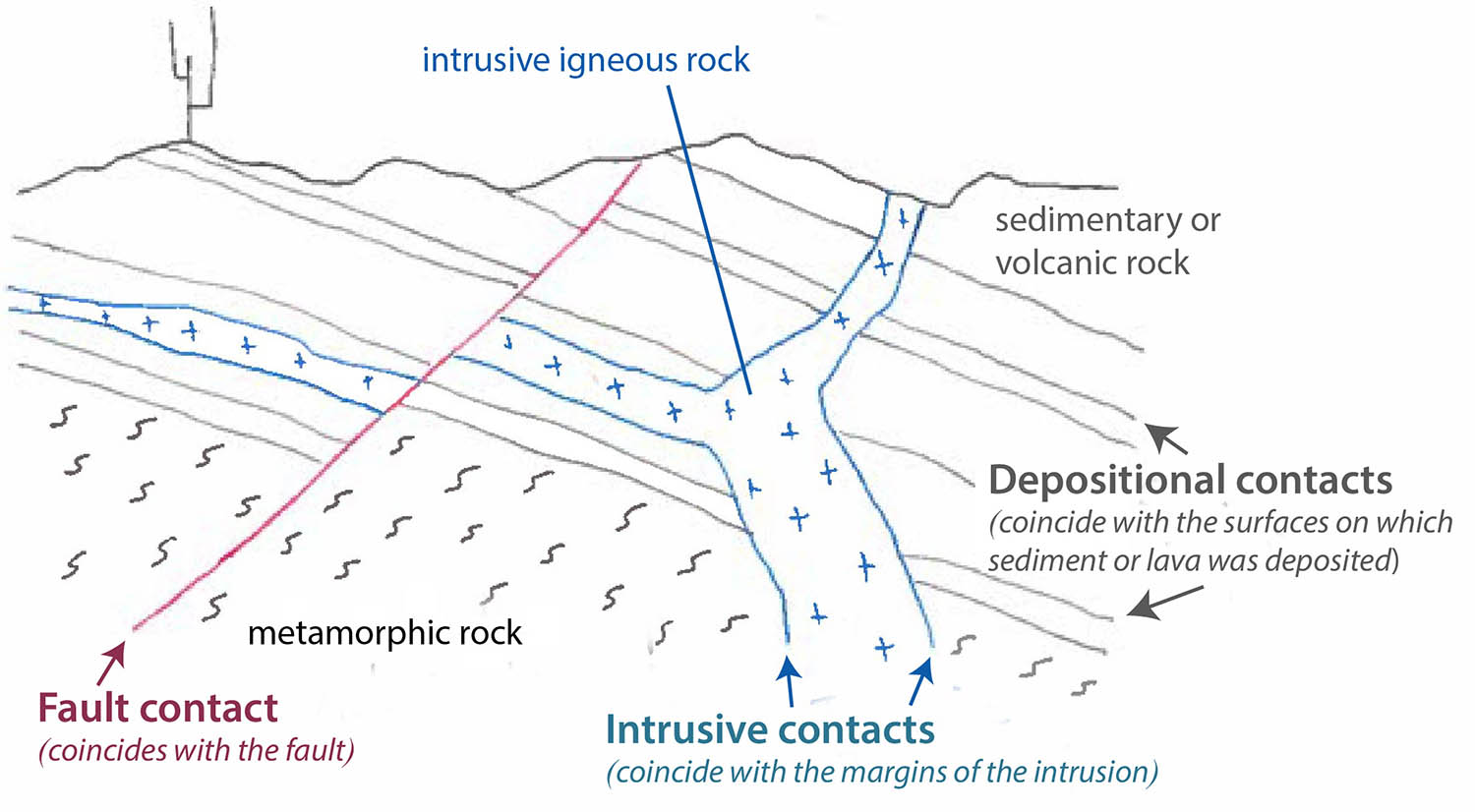



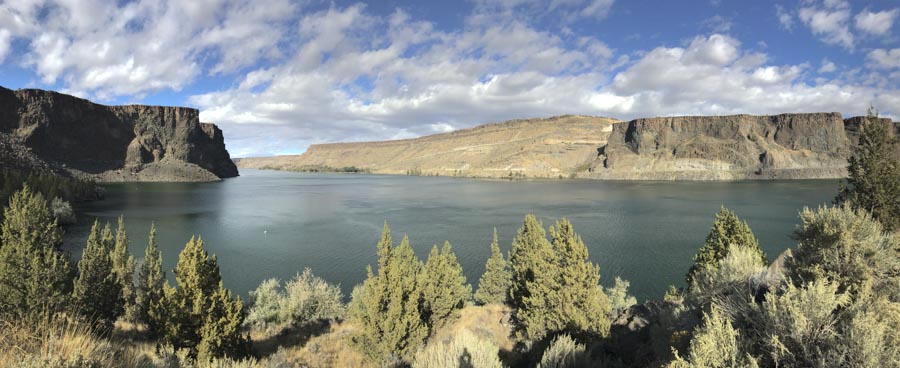
 From the geologic map, modified from Bishop and Smith, 1990, you can see how the brown-colored canyon-filling basalt, (called the “Intracanyon Basalt”) forms narrow outcrops within today’s Crooked and Deschutes canyon areas. It erupted about 1.2 million years ago and flowed from a vent about 60 miles to the south. You can also see that most of the bedrock (in shades of green) consists of the Deschutes Formation, and that there are a lot of landslides along the canyon sides.
From the geologic map, modified from Bishop and Smith, 1990, you can see how the brown-colored canyon-filling basalt, (called the “Intracanyon Basalt”) forms narrow outcrops within today’s Crooked and Deschutes canyon areas. It erupted about 1.2 million years ago and flowed from a vent about 60 miles to the south. You can also see that most of the bedrock (in shades of green) consists of the Deschutes Formation, and that there are a lot of landslides along the canyon sides.







